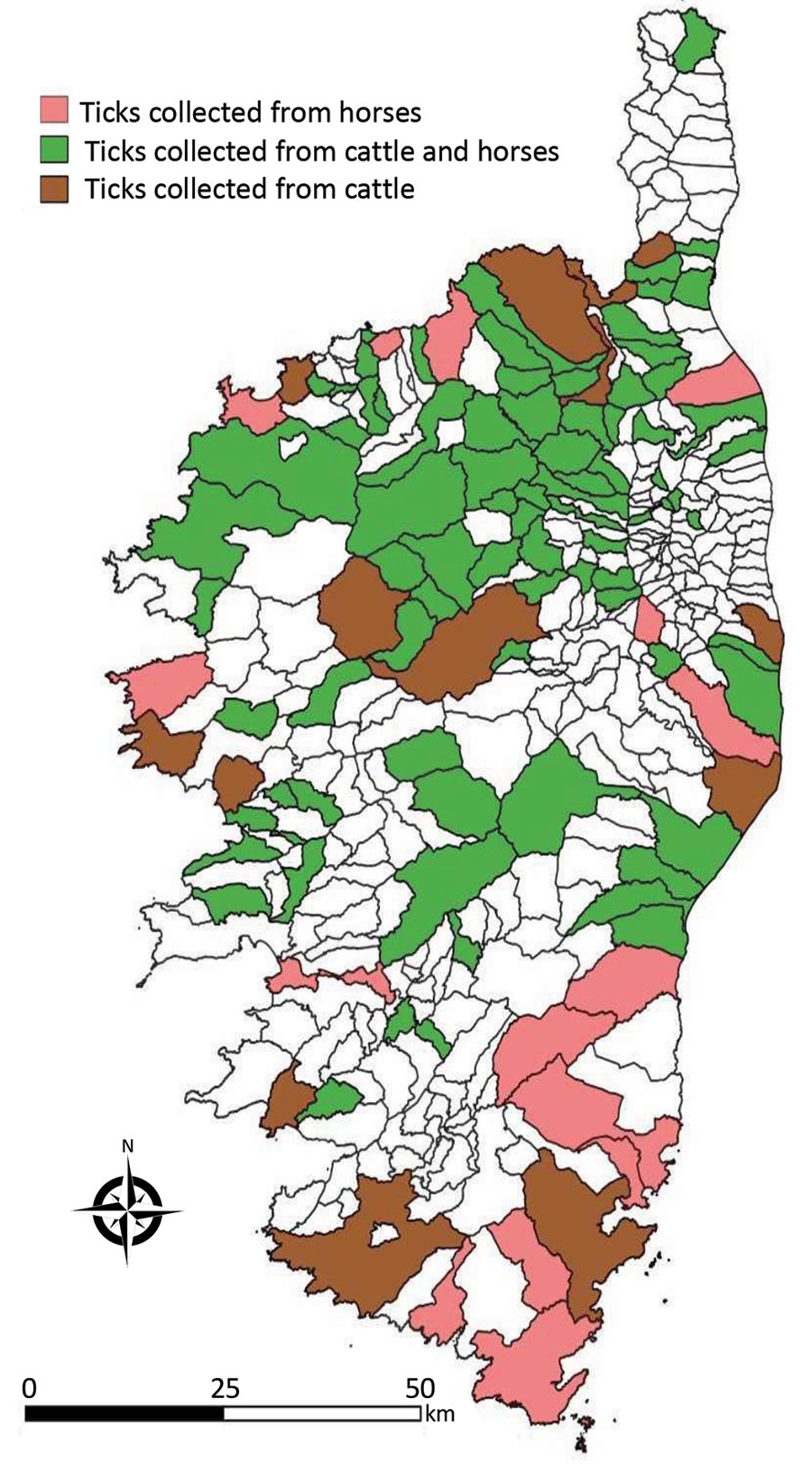Volume 28, Number 5—May 2022
Dispatch
Lack of Evidence for Crimean–Congo Hemorrhagic Fever Virus in Ticks Collected from Animals, Corsica, France
Figure

Figure. Locations of tick collection sites (for cattle and horses) for a study of Crimean–Congo Hemorrhagic fever virus in ticks from wild and domestic animals, Corsica, France, 2016–2020.
Page created: February 18, 2022
Page updated: April 19, 2022
Page reviewed: April 19, 2022
The conclusions, findings, and opinions expressed by authors contributing to this journal do not necessarily reflect the official position of the U.S. Department of Health and Human Services, the Public Health Service, the Centers for Disease Control and Prevention, or the authors' affiliated institutions. Use of trade names is for identification only and does not imply endorsement by any of the groups named above.